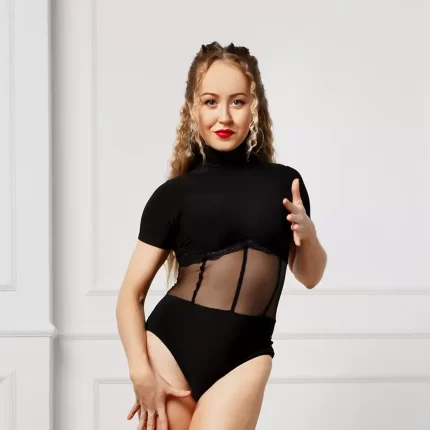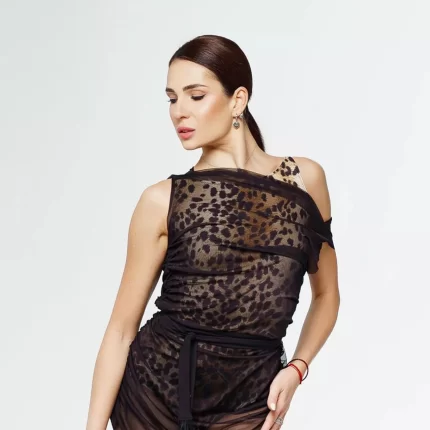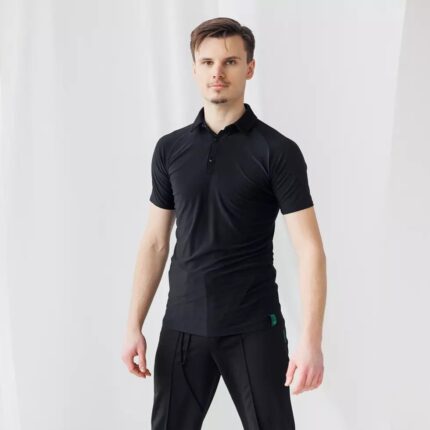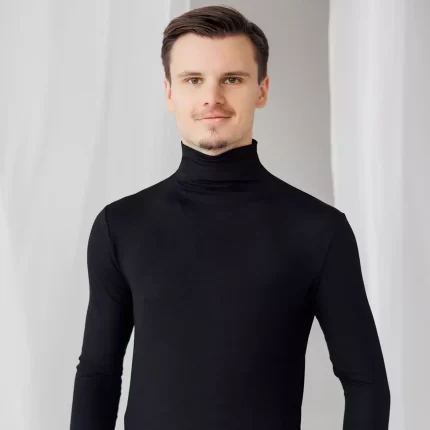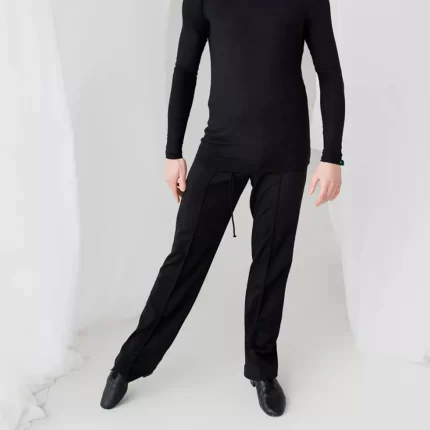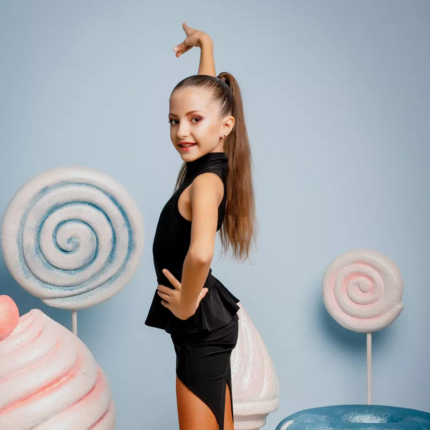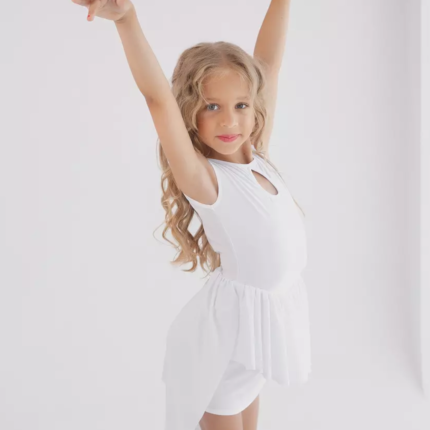Table of Contents
Hi everyone, I’m Anna Babiy, owner of Fashion Dance! And, oh, the joy of dance! Is there anything quite like watching your little one twirl and leap, completely lost in the music? I’ve been immersed in this world for a long, long time. Twelve years, to be exact, running Fashion Dance, and before that, the ballroom floor was my life. So trust me, as a former dancer myself, I get it. It’s not just about the steps; it’s about the feeling, the expression…and, well, let’s be honest, the outfit plays a part. Sometimes a surprisingly huge part!
A leotard, for a young girl…it’s like the foundation, you know? The very first layer. Or, to put it another way, the core piece of dance studio attire. And we’re talking, of course, about girls dance leotards, dance leotards for girls…or, if we’re being precise, kids dance leotards. But it’s so much more than just a practical item. It’s about that little extra something. That sparkle and shine. Because, honestly, every little dancer deserves to feel like a star, doesn’t she? From the very first class to the most challenging performance, the right leotard makes a difference. And so, here we go, with my 12 years of experience and a lifetime of love for dance, let’s explore this together. Get ready to dive deep!
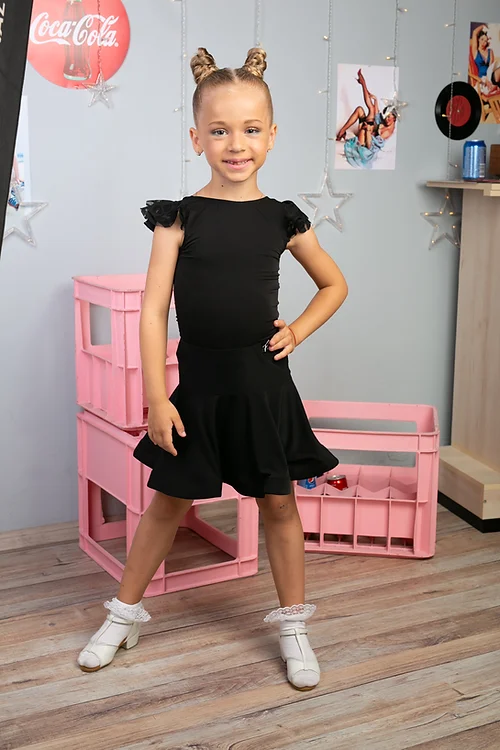
Section 1: Exploring Different Leotard Styles
Right then! So we’ve established that the leotard is, you know, kind of a big deal. But… which one? Oh, the choices! It can be a little overwhelming, can’t it? There are so many different styles out there. Don’t worry, though. That it why, I created Fashion Dance. Think of this section as your friendly, not-at-all-scary guide to the wonderful world of leotard designs. We’re going to break it down, nice and easy. From the super-simple basics to the slightly fancier options, we’ll cover the main styles you’re likely to come across. And, importantly why each one might be perfect (or, perhaps, not so perfect) for your little dancer. We’ll look at the pros, the cons… the whole shebang! So, breathe deep, and let’s start exploring the different cuts, shapes, and… well, styles of leotards available. First up, the classic: the tank leotard.
Subsection 1.1: Tank Leotards
Right, the tank leotard. The absolute workhorse of the dance wardrobe, and, in my not-so-humble opinion, a true classic! If you’re picturing a sleeveless top, similar in style to a… well, a tank top, then you’ve got the basic idea. These are your tank leotards, often referred to as sleeveless leotards, and they represent, without a doubt, a foundational piece of classic dancewear.
The beauty of this style? It all boils down to simplicity, darling, utter simplicity! And, just as importantly, comfort. Think about it: we’re talking about maximum arm movement here. Nothing to get in the way, no sleeves to bunch up, twist around, or restrict those graceful port de bras. This inherent freedom makes them wonderfully versatile, a real chameleon of the dance world. Ballet? Absolutely. Jazz? Certainly! Contemporary? Without a doubt. They’re a bit like the… well, the dependable blue jeans of the leotard world. A good, solid, reliable option, and particularly well-suited to warmer weather, or for those dancers who, much like myself during my ballroom days, tend to work up a good sweat! They are, in a word, exceptionally comfortable leotards.
Let’s delve a bit deeper into why they’re so popular. Here are some key advantages of the tank leotard:
- Unrestricted Movement: As I’ve mentioned, the sleeveless design allows for a full range of arm motion, crucial for all dance forms. No catching, no pulling, just pure, unadulterated freedom.
- Breathability: Especially in warmer climates or during intense rehearsals, a tank leotard keeps things cool and comfortable. Less fabric means better airflow.
- Versatility: From classical ballet to energetic jazz, the tank leotard adapts beautifully to various dance styles. It’s a true all-rounder.
- Simplicity: No fiddly straps or complex fastenings. Easy to put on, easy to take off – a blessing for young dancers (and their parents!).
- Layering Potential: When the temperature drops, a tank leotard serves as an excellent base layer. You can easily add a shrug, a wrap sweater, or even a long-sleeved leotard over it for extra warmth.
- Wide varity of colors: There is no limit here, any color that you can only imagine.
So, while it may seem basic, the tank leotard is anything but. It’s a fundamental, and for many very good reasons. It’s the dependable foundation upon which countless dance dreams are built. Remember: tank leotard = simple, classic, comfortable, versatile. A true dance wardrobe essential, and a fantastic starting point for any young dancer.
Subsection 1.2: Camisole Leotards
Alright, let’s move on to the camisole leotard! Now, this is where things get a touch more delicate. Think of the camisole leotard as the… slightly more refined cousin of the tank. The main difference? The straps. We’re talking thin, spaghetti-like straps here – hence the name, camisole leotards, which refers to that, thin straps style. This gives them a more delicate look, and, some would say, a more elegant dancewear aesthetic.
While they share some similarities with tank leotards in terms of versatility – they can certainly be worn for various dance styles – the camisole leotard often feels a bit… dressier. You might find them more commonly in ballet, for instance, where that delicate appearance is particularly prized. The thin straps offer a beautiful, clean line across the shoulders and back, showcasing the dancer’s port de bras and upper body work.
However, it’s worth noting a few practical considerations:
- Strap Security: Those thin straps, while elegant, can sometimes be prone to slipping, especially during more vigorous movement. It’s crucial to ensure a good fit, and some dancers might prefer leotards with adjustable straps for added security.
- Support: Depending on the design and the dancer’s build, camisole leotards might offer slightly less support than a tank leotard with wider straps. This is less of a concern for younger dancers, but something to keep in mind as they grow.
- Undergarments: The thin straps can sometimes make it tricky to conceal bra straps, if a bra is needed. There are specialized dance bras available, of course, but it’s something to consider.
Here are main types of camisole leotards:
- Simple camisole: basic design, thin straps, it can be with a pinch or without.
- Camisole with an interesting back: this gives extra touch to the look, and a dancer will be notice from the back.
- Criss-cross straps: Those, when straps forming beautiful geometrical lines on the back, and those usually a bit more secure compare to straight straps.
Despite these points, the camisole leotard remains a firm favorite, and for good reason. Its delicate beauty and elegant lines make it a truly lovely choice for any dancer who wants to feel a little extra special in the studio. It’s all about finding the right fit and feeling confident!
Subsection 1.3: Long Sleeve Leotards
Right then, let’s talk about staying warm and stylish! Enter the long sleeve leotards. As the name quite clearly suggests, these leotards feature sleeves that extend down to the wrists, providing, very obviously, warmth and coverage. This makes them an absolute lifesaver during the colder months, or in chilly studios – trust me, I remember those freezing winter rehearsals! They’re the quintessential winter dancewear choice.
But it’s not just about practicality. Oh no. Long sleeves also bring a certain… elegance to the table. Think of the sleek, unbroken lines they create. They can elongate the arms, enhance the port de bras, and create a wonderfully streamlined silhouette. This elegant style is often favored in ballet, but it’s certainly not limited to it. You’ll find long-sleeved leotards in contemporary, lyrical, and even some jazz styles.
Here’s a breakdown of some key points to consider:
- Warmth Without Bulk: A good long-sleeved leotard provides warmth without feeling restrictive. It should allow for a full range of movement, just like any other leotard. The fabric, of course, plays a big role here – more on that later!
- Layering Options: While they provide warmth on their own, long-sleeved leotards can also be layered under other garments, like a wrap sweater or a vest, for extra insulation.
- Neckline Variations: Just like tank and camisole leotards, long-sleeved versions come in a variety of necklines – scoop neck, boat neck, V-neck, even turtleneck styles. It’s all about personal preference and the overall look you’re going for.
It is also worth mentioning, that some leotards come with attached gloves. Those are usually custom made, for a stage performance.
So, whether it’s for practical warmth or for that touch of sophisticated elegance, the long-sleeved leotard is a valuable addition to any dancer’s wardrobe. It’s a testament to the fact that you can be both comfortable and incredibly stylish, even when the temperature drops!
Subsection 1.4: Short Sleeve Leotards
And finally, in our tour of sleeve lengths, we arrive at the short sleeve leotards! Think of these as the… happy medium, the Goldilocks option, if you will. They offer a bit more coverage than a tank or camisole, but without the full commitment of a long sleeve. This makes them a wonderfully versatile style, suitable for a wide range of dance genres and weather conditions.
They’re often described as comfortable and stylish, and that’s a pretty accurate description. They provide a bit of extra warmth on the upper arms, which can be nice in air-conditioned studios, but they still allow for plenty of airflow and freedom of movement. You’ll often find short-sleeved leotards used in ballet, jazz, contemporary, and even tap – they’re a true all-rounder.
Here are a few things that make short-sleeved leotards a popular choice:
- A Balance of Coverage and Freedom: They strike that sweet spot between feeling too exposed and feeling too restricted. It’s a comfortable compromise for many dancers.
- Year-Round Appeal: They’re not just for spring or autumn. They can work in summer with breathable fabrics, and in winter with clever layering.
- Variety of Styles: Like all leotards, they come in a huge array of colors, necklines, and back designs. You can find simple, classic styles, or something with a bit more flair.
- Cap Sleeves: There is special kind of short sleeves – Cap Sleeves, those that only cover the shoulder.
The short-sleeved leotard is often overlooked, in my opinion, in favor of its more dramatic cousins. But it’s a truly practical and adaptable choice, and one that deserves a place in every dancer’s wardrobe. It’s the reliable friend you can always count on, no matter the season or the style of dance. It is that perfect middle ground, offering both comfort and a touch of style.
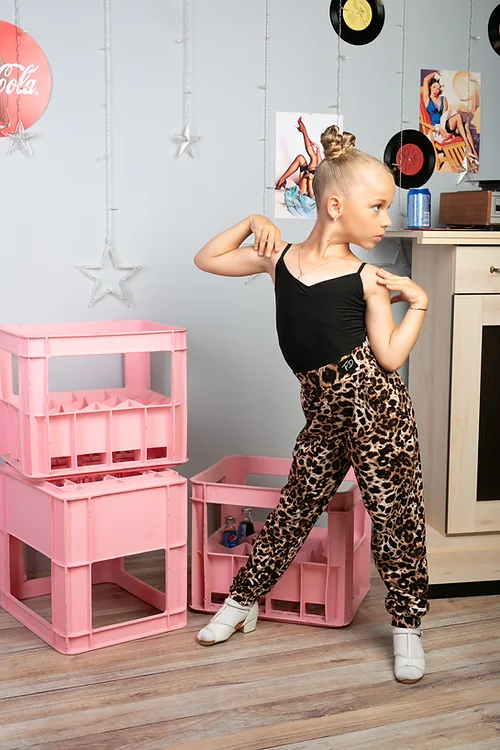
Section 2: Fabrics and Features for Comfort and Performance
Right, so we’ve explored the shapes of leotards, the different styles. Now, let’s get down to the substance – literally! Because what a leotard is made of, well, that’s just as important as how it looks. And, I might add, after 12 years in this business, and a lifetime of dancing before that, I’ve learned a thing or two about fabrics!
This section is all about what goes into making a leotard that’s not just pretty, but also comfortable, supportive, and, let’s face it, able to withstand the rigors of dance training. We’re talking about breathability, stretch, durability… all those crucial elements that separate a “meh” leotard from a “wow” leotard. And, because we’re Fashion Dance, we’re also going to talk about the fun stuff – the embellishments, the sparkle, the things that make a leotard truly special. So, let’s dive in and get to grips with the materials and features that really matter, the things that will help your young dancer feel confident and amazing in the studio!
Subsection 2.1: Breathable Fabrics
Okay, let’s talk breathability. Because, let’s be honest, dancing is hard work! Whether it’s a gentle ballet class or a high-energy jazz routine, your young dancer is going to sweat. And a leotard that doesn’t breathe? Well, that’s just a recipe for discomfort, stickiness, and, frankly, a rather unpleasant experience. That’s why choosing breathable leotards, made from moisture-wicking materials, is absolutely crucial.
What do I mean by “breathable”? I mean fabrics that allow air to circulate, and that draw moisture away from the skin, helping it evaporate quickly. This keeps the dancer feeling cooler, drier, and much more comfortable, even during intense activity. Trust me, this is not something you want to skimp on!
So, what are the star players in the world of breathable dancewear fabrics? Let’s take a look:
- Cotton: Good old cotton! It’s soft, comfortable, and naturally breathable. However, it can hold onto moisture a bit more than some synthetic fabrics, so it’s often blended with other materials for dancewear. A cotton blend is often a great choice for younger dancers or those with sensitive skin.
- Lycra/Spandex: These are the magic ingredients that give leotards their stretch and recovery. Lycra and spandex are essentially the same thing (different brand names), and they’re incredibly important for allowing a full range of movement. They also tend to be quite good at wicking away moisture.
- Supplex Nylon: A special type of nylon with a soft, cottony feel, that breathes and takes the moisture away from the body.
- Mesh: Often used as a panel or detail, especially on the back.
You’ll often find leotards made from a blend of these fabrics, combining the best qualities of each. For example, a cotton-Lycra blend offers the softness and breathability of cotton, with the stretch and moisture-wicking properties of Lycra. The key is to look for fabrics that are specifically designed for athletic wear, as these will typically offer the best performance in terms of breathability and moisture management. It is very important to choose fabrics wisely!
Subsection 2.2: Sparkle and Shine
Right, let’s get to the fun part! Because while comfort and performance are essential, let’s be honest – a little bit of sparkle never hurt anyone! And for many young dancers, that extra touch of shimmer and shine is what makes their leotard truly special. We’re talking about leotards with embellishments, those little details that add personality and a touch of magic.
There are so many ways to add sparkle to a leotard, from subtle to… well, let’s just say very noticeable! Here are a few of the most popular options:
- Rhinestones: These little gems can be scattered across the leotard, arranged in patterns, or used to create dazzling accents. Rhinestones catch the light beautifully, creating a stunning effect, especially under stage lights.
- Sequins: Another classic choice, sequins are small, shiny discs that are sewn onto the fabric. They create a more all-over shimmer than rhinestones, and they come in a huge variety of colors and sizes.
- Glitter: For a more subtle (or sometimes not-so-subtle!) sparkle, glitter can be incorporated into the fabric itself, or applied as a decorative finish.
- Metallic Fabrics: Instead of adding embellishments, you can choose a leotard made from a fabric that has a metallic sheen or a shimmering finish. This creates a more understated, but still eye-catching, effect.
- Prints: Prints can be anything, starting from flowers and finishing with a space.
The key is to choose embellishments that are securely attached and won’t interfere with the dancer’s movement. You also want to make sure they’re appropriate for the dance style and the occasion. A few strategically placed rhinestones might be perfect for a ballet performance, while a leotard covered in sequins might be better suited for a jazz or show dance routine. And it is important to follow washing instruction, to make sure the “sparkle and shine” will stay longer. Because it is, believe me, very frustrating to loose all the beatiful stones after a first wash.
Ultimately, it’s all about adding personality and letting your young dancer express their individual style. A little bit of sparkle can go a long way in boosting confidence and making them feel like a true star!
Subsection 2.3: Secure Fit and Support
Alright, we’ve covered breathability and sparkle, but there’s one crucially important aspect of leotard design we haven’t touched on yet: fit. And I’m not just talking about whether it’s the right size – although that’s obviously essential! I’m talking about a secure fit that provides comfortable support and, crucially, prevents any… ahem… wardrobe malfunctions.
Think about it: a leotard is essentially a second skin for a dancer. It needs to move with them, allowing for a full range of motion without slipping, sliding, bunching, or, heaven forbid, revealing more than it should! Avoiding wardrobe malfunctions is a top priority, both for comfort and for confidence.
Here’s what to look for to ensure a secure and supportive fit:
- Snug, But Not Tight: The leotard should fit snugly against the body, without any gaping or looseness. But it shouldn’t be so tight that it restricts movement or digs into the skin. You should be able to pinch a small amount of fabric, but not a handful.
- Strap Placement: Whether it’s a tank, camisole, or long-sleeved leotard, the straps should sit securely on the shoulders without slipping or digging in. Adjustable straps can be a great option for achieving a perfect fit.
- Leg Line: The leg openings should be snug enough to stay in place, but not so tight that they cut off circulation or cause discomfort.
- Torso Length: This is crucially important! A leotard that’s too short in the torso will ride up and be uncomfortable, while one that’s too long will bunch and sag. Measure your dancer’s torso length carefully and compare it to the leotard’s size chart.
- Gusset: A lined gusset is important not only for a comfort, but also from a hygiene point of view.
Proper fit is not just about aesthetics; it’s about allowing the dancer to move freely and confidently, without worrying about their clothing. It’s about providing the support they need to perform at their best. And it’s about ensuring that they feel comfortable and secure in their dancewear, so they can focus on what really matters: expressing themselves through movement. A well-fitting leotard is an investment in their dance journey, believe me.
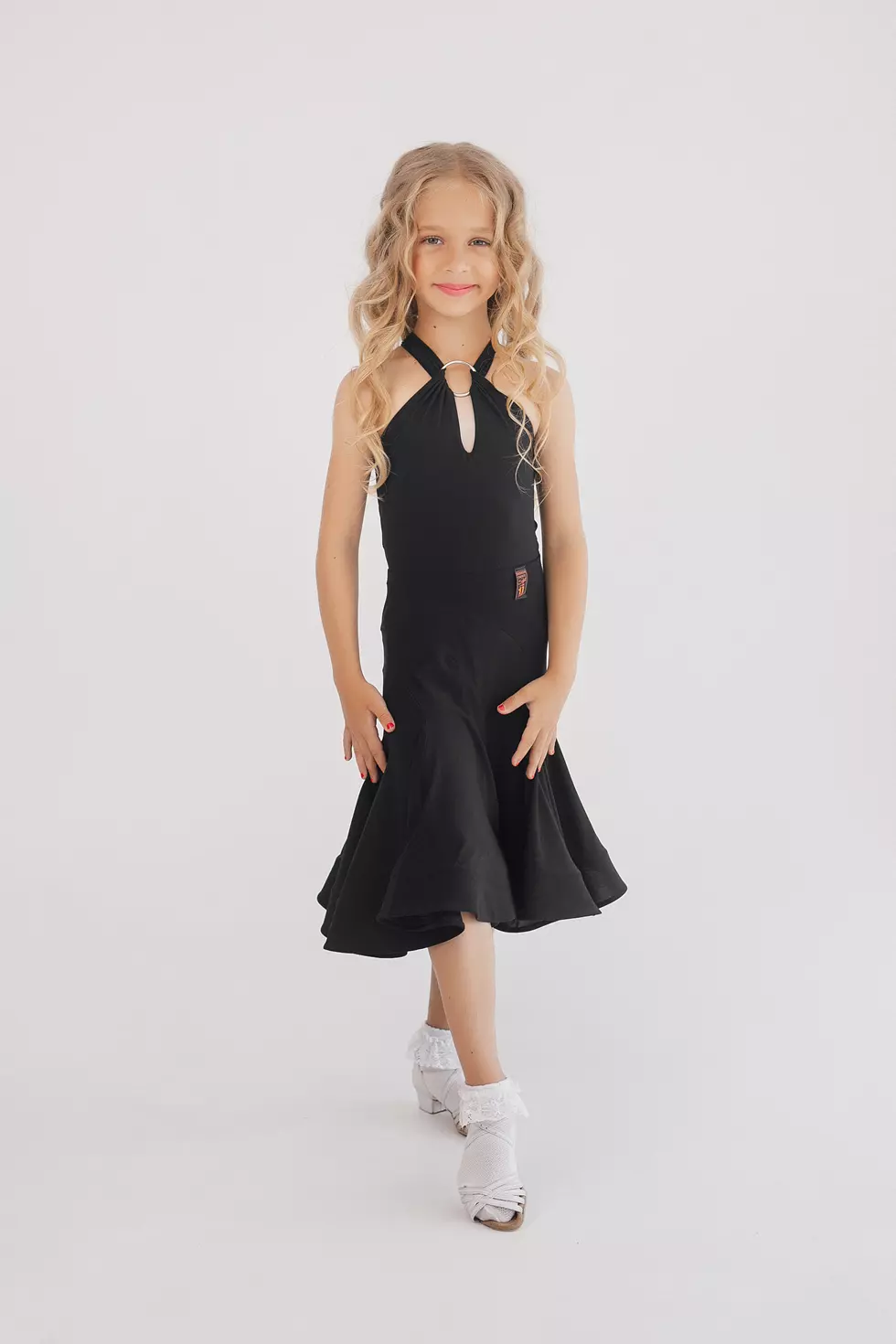
Section 3: Choosing the Right Leotard for Different Dance Styles
Right, so we’ve covered the what and the how of leotards – the styles, the fabrics, the fit. Now, let’s get a little more specific. Because, while a tank leotard can work for pretty much any dance genre, let’s be honest: certain styles are more commonly associated with certain types of dance. And there are often good reasons for that!
This section is all about navigating the sometimes-confusing world of dancewear conventions. We’ll explore which leotard styles tend to be favored in different dance disciplines, and why. Think of it as your guide to understanding the unspoken (and sometimes spoken!) rules of the dance studio. Now, I’m not saying you have to follow these conventions – personal expression is always key! – but understanding them can certainly help you make informed choices, and ensure your young dancer feels comfortable and confident in their class. So, let’s take a little tour of the dance world, one leotard style at a time!
Subsection 3.1: Ballet Leotards
Ah, ballet! The epitome of grace, elegance, and… very specific leotard traditions! When we talk about ballet leotards, we’re often talking about classic styles and elegant designs, reflecting the timeless nature of this dance form. While there’s more flexibility these days than there used to be, certain conventions still tend to hold sway. Traditional dancewear for ballet often leans towards the understated and refined.
Here’s what you’ll typically find in a ballet class:
- Camisole Leotards: These are hugely popular in ballet, thanks to the delicate lines they create, showcasing the dancer’s neck, shoulders, and back. Think thin straps, often with a simple, clean design.
- Tank Leotards: Also a common sight, especially for younger dancers or in more relaxed classes. Again, simplicity is often key.
- Long-Sleeved Leotards: Particularly favored for colder weather or for achieving a more elegant, elongated look.
- Muted Colors: Traditionally, ballet leotards tend to be in pale or muted colors – think pastels like pink, blue, lavender, and white. Black is also a classic choice, of course. Bright, bold colors or busy patterns are less common, although not unheard of, especially in more contemporary ballet settings.
- Simple Embellishments: If there are any embellishments, they’re usually subtle – perhaps a few delicate rhinestones or a touch of lace. Nothing too flashy or distracting.
- Pinch front: this is detail, usually on a front of leotard, that creates nice shape.
The overall aesthetic is one of understated elegance and clean lines. The focus is on the dancer’s form and technique, not on the leotard itself. It’s about creating a sense of harmony and uniformity, allowing the beauty of the movement to shine through. So, while there’s always room for individual expression, understanding these traditional guidelines can help you choose a ballet leotard that feels appropriate and respectful of the art form.
Subsection 3.2: Jazz Leotards
Right, let’s move from the graceful world of ballet to the energetic realm of jazz! Jazz leotards tend to be quite different from their ballet counterparts, reflecting the dynamic and often fast-paced nature of this dance style. While comfort and freedom of movement are still paramount, there’s generally more room for bolder styles and a bit more… flair. Form-fitting styles are common, as they allowing for dynamic movement without any excess fabric getting in the way.
Here’s what you might typically encounter in a jazz class:
- Tank Leotards: A very popular choice, offering unrestricted arm movement and breathability.
- Camisole Leotards: Also common, although strap security can be a bit more of a consideration in jazz, due to the more vigorous movements.
- Short-Sleeved Leotards: A good option for those who want a bit more coverage without sacrificing freedom of movement.
- Long-Sleeved Leotards: Less common than in ballet, but still seen, particularly for warm-ups or in colder weather.
- Bolder Colors and Patterns: Unlike ballet, jazz often embraces brighter colors, bolder patterns, and more eye-catching designs. Think vibrant hues, geometric prints, or even animal prints.
- More Embellishments: Sequins, rhinestones, and glitter are all fair game in jazz! The leotard can be a part of the overall performance aesthetic, adding to the energy and excitement of the dance.
- Cutouts and Mesh Panels: These design features are often incorporated to add visual interest and enhance breathability.
The key difference from ballet is that the leotard is often seen as part of the performance, rather than simply a functional garment. It’s a chance to express personality, to add to the overall visual impact of the dance. So, while comfort and practicality are still essential, don’t be afraid to embrace a bit more boldness and flair when choosing a jazz leotard!
Subsection 3.3: Contemporary Leotards
And now, we arrive at contemporary dance – a world where the rules are… well, let’s just say there are fewer rules! Contemporary leotards often reflect the expressive and experimental nature of this dance form. Unique designs and expressive styles are not only accepted but often encouraged. Modern dancewear in the contemporary realm is all about freedom of movement, individuality, and finding a leotard that allows the dancer to fully embody the choreography.
Here’s what you might find in a contemporary class:
- Anything Goes (Almost!): Seriously, you’re likely to see a much wider variety of styles in a contemporary class than in a ballet or even a jazz class. Tank leotards, camisole leotards, long-sleeved leotards, short-sleeved leotards – they’re all welcome.
- Asymmetrical Designs: One-shoulder leotards, cutouts, and other asymmetrical details are common, reflecting the often-unconventional nature of contemporary choreography.
- Unique Fabrics and Textures: You might see leotards made from unusual fabrics, with interesting textures or draping.
- Layering: Layering is a big part of contemporary dancewear. Dancers might wear a leotard over a crop top, or under a loose-fitting tank or mesh top.
- Muted or Bold Colors: Both muted, earthy tones and bold, vibrant colors are common, depending on the dancer’s personal style and the choreography.
- Focus on Movement: Ultimately, the most important thing is that the leotard allows for a wide range of motion and doesn’t restrict the dancer’s expression.
Contemporary dance is all about pushing boundaries and exploring new ways of moving. The leotard, therefore, becomes a tool for self-expression, a way for the dancer to connect with the choreography on a deeper level. So, don’t be afraid to experiment, to try different styles, and to find a leotard that truly reflects the dancer’s individuality and artistic vision. Comfort, of course, is still key – but beyond that, the possibilities are endless!
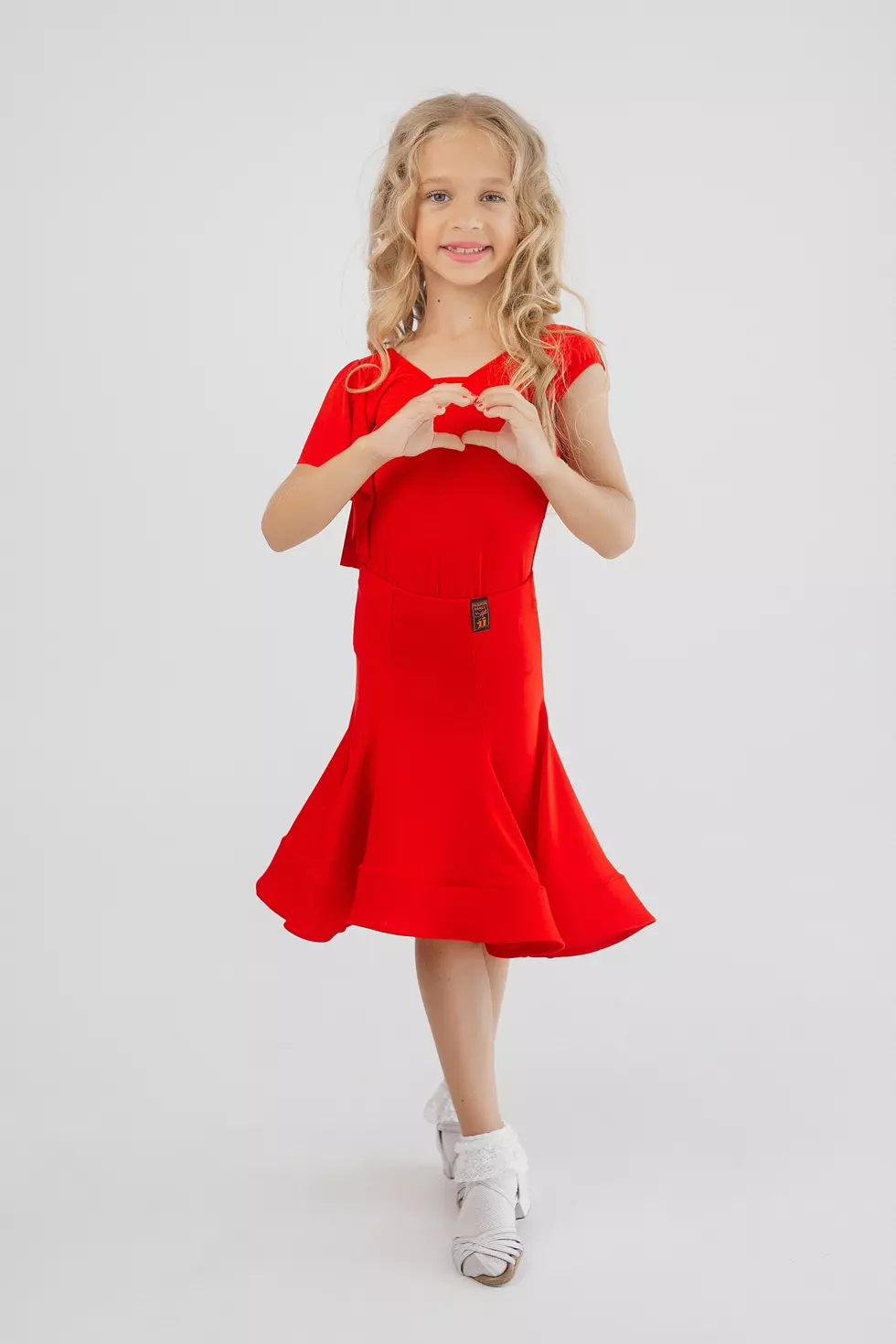
Section 4: Where to Find the Perfect Leotard
Right! So, we’ve covered styles, fabrics, fit, and even the nuances of different dance genres. You’re practically a leotard expert by now! But… where do you actually find these magical garments? Well, that’s what this section is all about. Because, let’s face it, the search for the perfect leotard can sometimes feel like a quest in itself!
Whether you prefer the convenience of online shopping or the personal touch of a brick-and-mortar store, there are plenty of options out there. I’ll share some of my favorite resources, both online and off, and offer some tips for navigating the sometimes-overwhelming world of dancewear retail. From specialized boutiques to large online marketplaces, we’ll explore the best places to find that perfect leotard that will make your young dancer feel confident, comfortable, and ready to shine! So, let’s get shopping!
Subsection 4.1: Online Dancewear Retailers
Okay, let’s start with the convenience of the internet! Online dancewear retailers offer a huge selection, often at competitive prices, and you can shop from the comfort of your own home – what’s not to love? Online stores provide a wide selection and convenient shopping, which is a major bonus for busy parents (and who isn’t a busy parent these days?).
Here are some of the advantages of shopping online:
- Vast Selection: Online retailers typically carry a much wider range of styles, sizes, and brands than brick-and-mortar stores. You’re more likely to find exactly what you’re looking for, even if it’s something a bit unusual.
- Competitive Prices: Online stores often have lower overhead costs than physical stores, which can translate into lower prices for you.
- Convenience: You can shop 24/7, at your own pace, without having to leave the house. This is a huge advantage for busy families.
- Reviews: Many online retailers feature customer reviews, which can be incredibly helpful in assessing the quality and fit of a particular leotard.
- Detailed Size Charts: Reputable online dancewear retailers provide detailed size charts, often with specific measurements for each garment. This helps you choose the right size for your dancer, minimizing the risk of returns.
However, there are a few things to keep in mind:
- You Can’t Try It On: This is the biggest drawback of online shopping. You have to rely on size charts and reviews, and there’s always a chance that the leotard won’t fit perfectly.
- Shipping Costs and Returns: Factor in shipping costs when comparing prices, and make sure you understand the retailer’s return policy before you buy.
- Check the seller: Make sure you are buying from a trusted seller.
Do your research, read reviews, and compare prices before making a purchase. And don’t be afraid to contact the retailer’s customer service department if you have any questions – a good online store will be happy to help!
Subsection 4.2: Local Dancewear Shops
Now, while the internet offers incredible convenience, there’s still something to be said for the experience of shopping at a local dancewear shop. Local boutiques often provide personalized service and the invaluable opportunity to try on leotards before you buy. This can be especially beneficial for young dancers, who are constantly growing, or for those who are new to dance and unsure of their size or preferred style.
Here are some of the advantages of shopping at a local dancewear store:
- Expert Advice: The staff at dancewear shops are typically knowledgeable about dancewear and can offer expert advice on fit, style, and fabric. They can help you find the perfect leotard for your dancer’s needs and body type. This personalized service is invaluable, especially for beginners.
- Trying It On: This is the biggest advantage. Being able to try on leotards before you buy ensures a perfect fit and eliminates the guesswork of online shopping.
- Supporting Local Businesses: Shopping at a local dancewear store supports your community and helps keep these valuable resources available.
- Immediate Gratification: You can take your purchase home with you right away, without having to wait for shipping.
- Seeing the Fabric in Person: You can feel the fabric, see the true colors, and assess the quality of the construction firsthand.
However, there are also a few potential drawbacks:
- Limited Selection: Local stores typically have a smaller selection than online retailers.
- Higher Prices: Prices may be slightly higher than online, due to higher overhead costs.
- Less Convenience: You have to travel to the store during their opening hours, which may not always be convenient.
If you have a local dancewear shop in your area, it’s definitely worth a visit, especially if you’re new to dance or if your dancer needs a particularly good fit. The personalized service and the ability to try on leotards can make all the difference! You might discover a hidden gem, a favorite brand, or even a new friend in the dance community. And, who knows, you might even find a shop owner as passionate about dance as I am!
Conclusion
So, there you have it! We’ve journeyed through the wonderful, sometimes bewildering, world of girls’ dance leotards. From the classic tank to the shimmering sequined creation, we’ve explored styles, fabrics, fit, and even the subtle (and not-so-subtle) differences between dance genres. Hopefully, you now feel much more confident about finding the perfect leotard – one that allows your young dancer to express your style and, most importantly, feeling confident in the studio.
Remember, the right leotard is more than just a piece of clothing. It’s a tool that empowers movement, boosts confidence, and helps your dancer feel like the star they truly are. It’s about finding that perfect balance between comfort, practicality, and, yes, a touch of sparkle! Whether it’s the simplicity of a tank leotard for ballet, the boldness of a sequined number for jazz, or the unique design of a contemporary piece, the goal is the same: to allow your dancer to shine.
Don’t be afraid to experiment, to try different styles, and to let your dancer’s personality guide your choices. And most importantly, remember that the best leotard is the one that makes your dancer feel comfortable, confident, and ready to take on the world, one graceful plié at a time. Because, ultimately, it’s all about the joy of dance, isn’t it? That feeling of freedom, of expression, of pure, unadulterated joy. And a great leotard? Well, that’s just the icing on the cake!
For a broader look at all types of kids’ dancewear, including shoes and accessories, check out our main guide: Kids Dancewear: A Guide to Finding the Perfect Fit and Style.
1. How often should I wash my daughter’s dance leotards, and what’s the best way to do it?
How often you wash your daughter’s dance leotards depends on how frequently she dances and how much she sweats. As a general rule, it’s best to wash them after each use, especially if she’s been sweating heavily. This prevents bacteria buildup and odors from setting in. However, if she only had a light practice and the leotard doesn’t seem soiled, you might be able to air it out and wear it again once before washing, but this is generally not recommended for hygiene reasons.
The best way to wash most dance leotards is by hand, using cold water and a mild detergent specifically designed for delicate fabrics or activewear. Avoid using bleach or fabric softeners, as these can damage the fibers and elasticity of the leotard. Gently swish the leotard in the soapy water, paying particular attention to areas that might be more soiled (like the underarms and gusset). Rinse thoroughly with cold water until all traces of detergent are gone.
If the care label indicates that machine washing is acceptable, use a delicate cycle with cold water and a mild detergent. Place the leotard in a mesh laundry bag to protect it from snagging on other garments. Always wash dark colors separately from light colors to prevent color bleeding.
For drying, air drying is always the best option. Lay the leotard flat on a clean, dry towel or hang it to dry, away from direct sunlight (which can fade colors). Avoid using a tumble dryer, as the heat can damage the fabric and embellishments, and cause shrinkage. If the care label does allow tumble drying, use the lowest heat setting and remove the leotard promptly. For leotards with embellishments like rhinestones or sequins, always turn them inside out before washing (and preferably hand-wash), and be extra gentle.
By following these washing and drying guidelines, you can help keep your daughter’s dance leotards clean, fresh, and in good condition for as long as possible.
2. My daughter is between sizes. Should I size up or down for a dance leotard?
When your daughter is between sizes for a dance leotard, it’s generally better to size up, especially for growing children. Here’s why, and some factors to consider:
Reasons to Size Up:
Children grow quickly, and a slightly larger leotard will provide some room for growth, extending the garment’s usability. A leotard that’s too small can be restrictive and uncomfortable, hindering movement and potentially causing chafing. A slightly larger size is more likely to allow for a full range of motion. If you plan to layer a top or warm-up gear over the leotard, sizing up will provide a bit more room for those extra layers. If your child has a long torso, it is safer to select bigger size.
When Sizing Down Might Be Okay (but less common):
If the leotard is made from an exceptionally stretchy fabric and the brand specifically recommends sizing down for a very snug fit (this would usually be noted in the product description or reviews), then you might consider it. However, even then, comfort should be the priority. Some dancers prefer a second-skin feeling.
Important Considerations:
Check customer reviews for any comments about the leotard running small or large. This can give you valuable insights. Some brands tend to run smaller or larger than others. If you’re familiar with the brand, that can help guide your decision. When in doubt, it’s always best to take your child’s measurements (bust, waist, hips, and especially girth – shoulder to crotch and back up) and compare them to the specific size chart provided by the retailer. Always check a return policy, when buying online.
Ultimately, the goal is to find a leotard that fits snugly but comfortably, allowing for a full range of motion without being too loose or baggy. A slightly larger leotard is generally preferable to one that’s too small, as it’s more likely to be comfortable and accommodate growth. A leotard that is a little too big can often be temporarily adjusted with a few stitches, whereas a leotard that’s too small cannot be made larger.
3. Are there any eco-friendly or sustainable leotard options?
Yes, absolutely! As awareness of environmental issues grows, so does the availability of eco-friendly and sustainable options in dancewear, including leotards. These options focus on using more sustainable materials and ethical production practices.
Sustainable Materials:
Many brands use organic cotton. Unlike conventionally grown cotton, organic cotton is cultivated without the use of harmful pesticides and synthetic fertilizers, reducing its environmental impact. Look for leotards made from certified organic cotton. Some brands are using innovative fabrics made from recycled materials, such as recycled nylon (often made from fishing nets and other plastic waste) or recycled polyester. This helps to reduce waste and conserve resources. Bamboo is a fast-growing, renewable resource that requires less water and pesticides than cotton. Bamboo fabric is also known for its softness, breathability, and moisture-wicking properties. Modal and Tencel (Lyocell) are made from sustainably sourced wood, using less harmful chemicals.
Ethical Production:
Look for brands that are transparent about their manufacturing processes and ensure fair wages and safe working conditions for their workers. Choosing leotards made locally, or at least in countries with stricter labor and environmental regulations, can reduce the carbon footprint associated with transportation. A high-quality leotard that lasts longer is inherently more sustainable than one that needs to be replaced frequently.
Certifications:
GOTS (Global Organic Textile Standard) is for organic cotton and other natural fibers. Oeko-Tex Standard 100 is a certification that shows that a fabric does not contain any harmful chemicals.
Other Tips:
Buying pre-owned leotards is a great way to reduce waste and save money. Taking good care of your leotards (washing in cold water, air drying) will extend their lifespan, reducing the need for replacements.
While the options for eco-friendly leotards might not be as widespread as conventional options, they are definitely increasing. By seeking out brands and materials that prioritize sustainability, you can make a more environmentally conscious choice for your daughter’s dancewear. It’s a great way to support responsible practices and teach your young dancer about the importance of caring for the planet.
4. What’s the best way to store dance leotards to keep them in good condition?
Proper storage is essential for maintaining the shape, elasticity, and overall condition of dance leotards. Here’s how to store them to maximize their lifespan:
Ensure they are clean and dry: Always wash and thoroughly dry leotards before storing them. Storing damp or soiled leotards can lead to mildew, odors, and fabric degradation.
Folding vs. Hanging: For most leotards, especially those made from stretchy fabrics like Lycra or spandex, folding is preferable to hanging. Hanging can stretch out the straps and distort the shape over time, especially if the leotard is heavy or embellished. If you do choose to hang, use padded hangers to minimize stress on the shoulders.
Folding Technique: Fold leotards neatly to avoid wrinkles and creases. A simple method is to lay the leotard flat, fold the sleeves inward (if it has sleeves), and then fold it in half or thirds, depending on the size and your storage space.
Storage Location: Store folded leotards in a drawer, on a shelf, or in a storage bin. Choose a cool, dry, and dark place, away from direct sunlight, heat, and humidity. These elements can fade colors, degrade fabrics, and damage embellishments.
Avoid Overcrowding: Don’t cram too many leotards into a single drawer or bin.
Overcrowding can cause wrinkles and make it difficult to find what you need. It can also restrict airflow, potentially leading to musty odors.
Tissue Paper (for embellished leotards): If your leotard has rhinestones, sequins, or other embellishments, place a sheet of acid-free tissue paper between the layers when folding to prevent snagging or scratching.
Breathable Storage: Avoid storing leotards in airtight plastic containers for extended periods. While plastic bins can be useful for short-term storage or transport, they can trap moisture and potentially lead to mildew. Opt for breathable storage solutions like fabric bins or drawers.
Travel: When traveling with leotards, pack them neatly in a garment bag or a separate compartment of your suitcase to protect them from snagging or damage.
By following these simple storage tips, you can help keep your daughter’s dance leotards in excellent condition, ready for her next class or performance. Proper storage not only preserves the appearance of the leotards but also extends their lifespan, saving you money and reducing waste in the long run.
5. My daughter has sensitive skin. What fabrics should I look for in a leotard?
If your daughter has sensitive skin, choosing the right fabric for her dance leotard is crucial for ensuring her comfort and preventing irritation. Certain materials are more likely to cause reactions than others, so it’s important to be mindful of your choices. Here are some fabrics that are generally considered good options for sensitive skin, and some to potentially avoid:
Recommended Fabrics:
Organic Cotton: Organic cotton is grown without the use of harsh pesticides and synthetic fertilizers, making it a gentler option for sensitive skin. Look for leotards made from 100% organic cotton or a blend with a high percentage of organic cotton.
Bamboo: Bamboo fabric is naturally hypoallergenic, antibacterial, and incredibly soft, making it an excellent choice for sensitive skin. It’s also very breathable and moisture-wicking, helping to keep your daughter cool and dry.
Modal and Tencel (Lyocell): These fabrics are made from sustainably sourced wood pulp and are known for their exceptional softness and smoothness. They are also breathable and moisture-wicking.
Supplex Nylon: It has a soft, cottony feel, and is great for a sensitive skin.
Fabrics to Consider with Caution (or Avoid):
Polyester: While polyester is durable and moisture-wicking, some people with sensitive skin find it irritating. If you choose a polyester blend, look for one that’s blended with a high percentage of a natural fiber like cotton.
Nylon: Similar to polyester, nylon can sometimes cause irritation for those with very sensitive skin. Again, blends with natural fibers can be a better option.
Leotards with Heavy Embellishments: While rhinestones and sequins can look beautiful, they can sometimes irritate sensitive skin, especially if they are directly against the skin or if the backing material is rough.
Brightly Dyed Fabrics: Some dyes can cause reactions in sensitive individuals. Look for leotards that are labeled as “hypoallergenic” or “dye-free,” or opt for lighter, pastel shades.
Additional Tips:
Wash Before Wearing: Always wash new leotards before your daughter wears them to remove any residual chemicals from the manufacturing process.
Use a Mild Detergent: Choose a fragrance-free, dye-free detergent specifically designed for sensitive skin.
Double Rinse: Rinse the leotard thoroughly to ensure all traces of detergent are removed.
Avoid Fabric Softeners: Fabric softeners can leave a residue on the fabric that can irritate sensitive skin.
Test a Small Area: If you’re unsure about a particular fabric, try testing a small area of your daughter’s skin before having her wear the leotard for an extended period.
Look for Flat Seams: Flatlock seams are less likely to rub and irritate the skin than traditional seams.
By carefully considering the fabric composition and following these tips, you can help ensure that your daughter’s dance leotard is comfortable, non-irritating, and allows her to focus on her dancing without any distractions.
